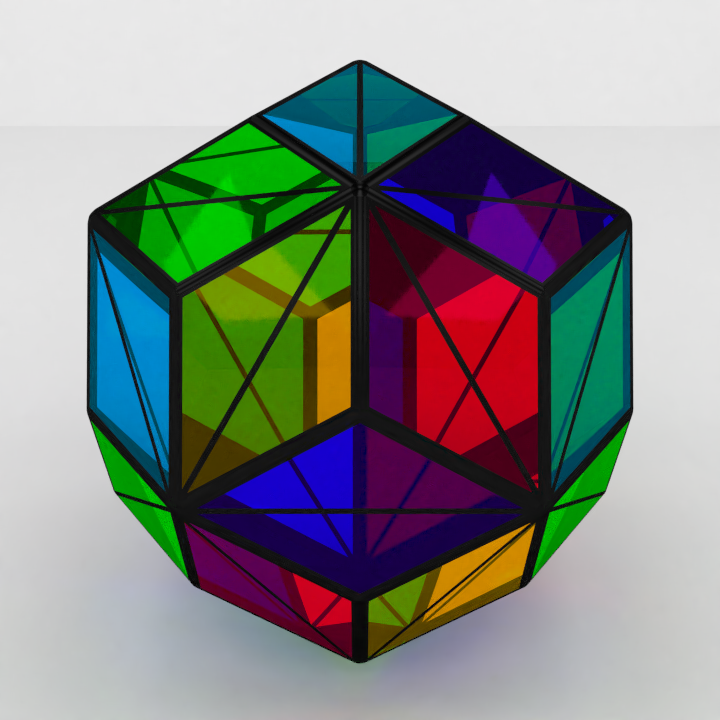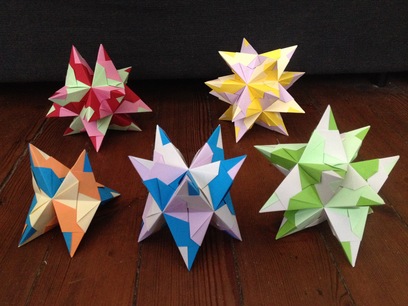A blog about satisfying my own curiosity.
Mostly about math, physics and computer science.
But also kanjis and modular origami.

Geometry : Interactive network of the convex regular-faced polyhedra
Even though I have not explained anything about convex polyhedra with regular faces yet, I have decided to post this network first. It is a tool I have made to better visualize the construction relationship between the many solids.
Created on December 3, 2018. Last update on January 25, 2019.

Rendering : Making and rendering the origami models
Once I had made the stop motion animation, I figured out it would be interesting to make some rendering to achieve the same animation. I had used Blender before but only for its 3D modeling capabilities and I always wanted to learn to use it for proper rendering too. In my head, the project seemed simple, I needed the 3D model, to make a scene for it with lights, cool materials and stuff and to render it. As a beginner I faced many challenges but it was worth it.
Created on August 23, 2018. Last update on January 19, 2019.

Misc : Stopmotion
As you could see in the section about origamis, I have made some animated pictures of many of the polyhedra I have built. In this post, I will explain how I did it.
Created on August 22, 2018. Last update on January 12, 2019.

Origami part 4 : Johnson Deltahedra
Quite a long time later after making the rhombic polyhedra, I stumbled upon a book on mathematics the title of which I don't remember.
Created on August 22, 2018. Last update on January 2, 2019.

Origami part 3 : Rhombic Polyhedra
I found out about rhombic polyhedra with two videos. The first one is a video from standupmaths where he makes a rhombic Bilinski dodecahedron out of cardboard.
Created on August 22, 2018. Last update on January 2, 2019.

Origami part 2 : Platonic Solids and Colorization
In the Micmaths' video, the base polyhedra are the 5 platonic solids, namely: the tetrahedron, the cube (or hexahedron), the octahedron, the dodecahedron and the icosahedron.
Created on August 22, 2018. Last update on January 2, 2019.

Origami part 1 : Introduction
I found about modular origamis originally with a video on making a Menger's sponge out of business card \cite{origamimengersponge}. I become quickly interested in this method to build things out off paper cubes but my cubic realizations are for another article (future ref).
Created on August 22, 2018. Last update on January 2, 2019.
